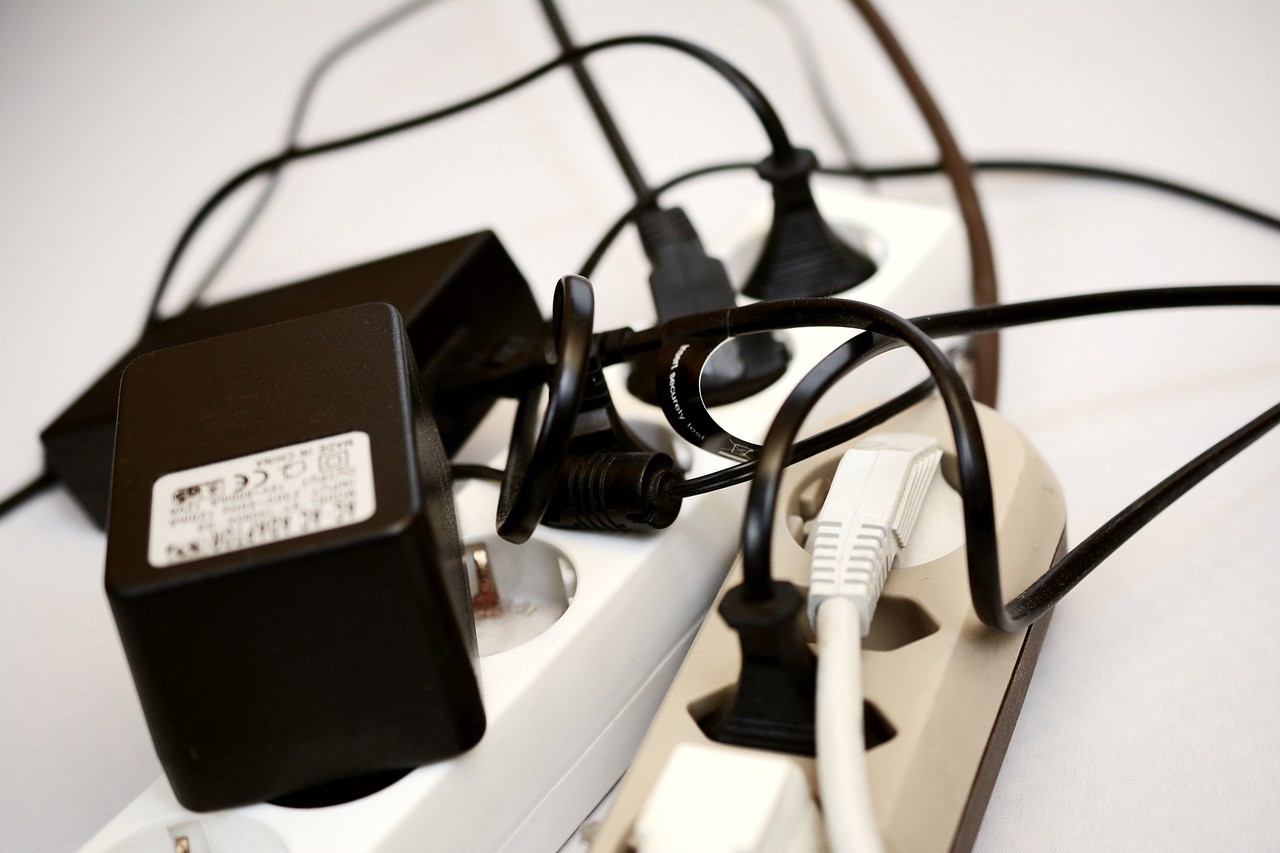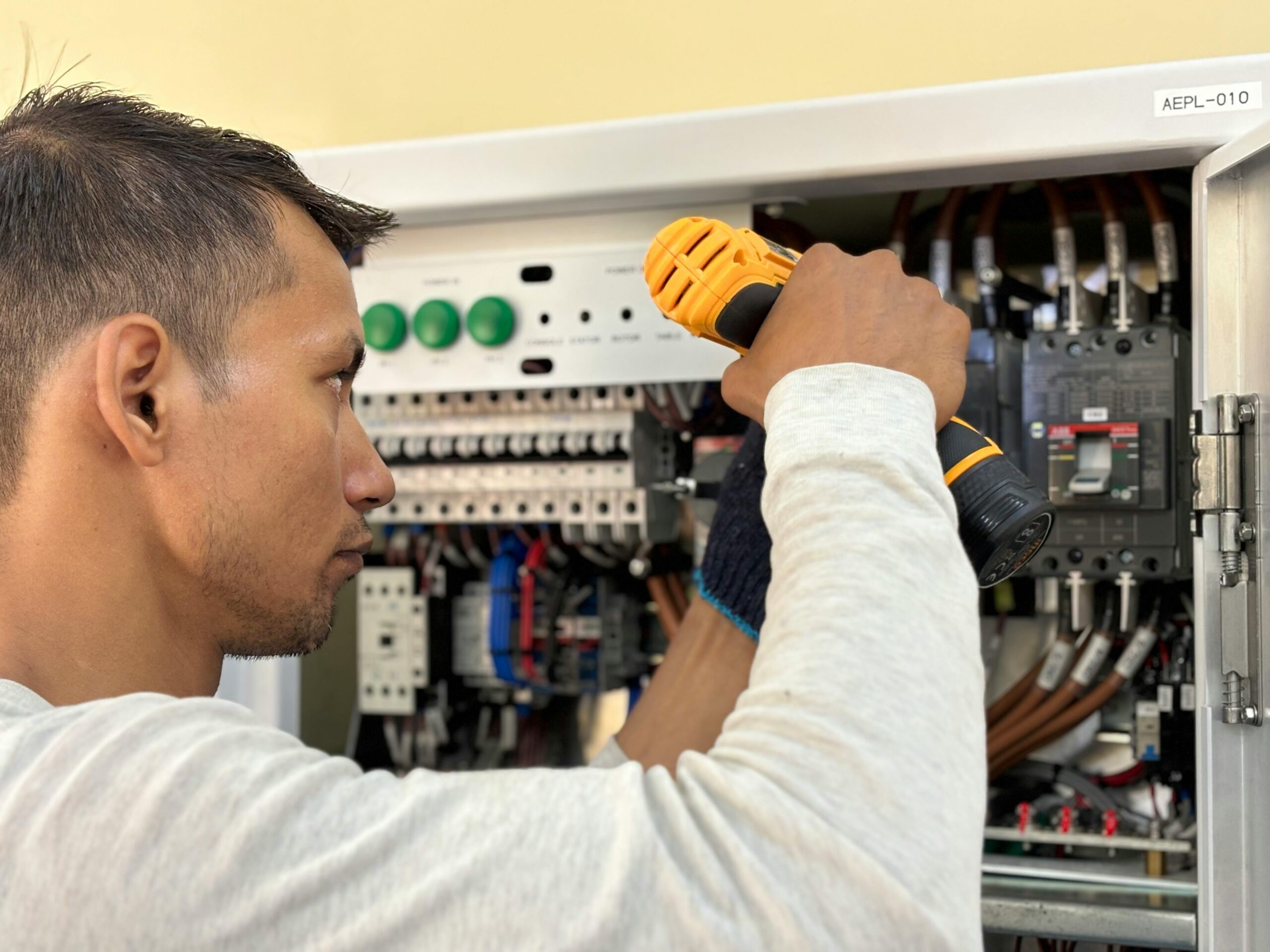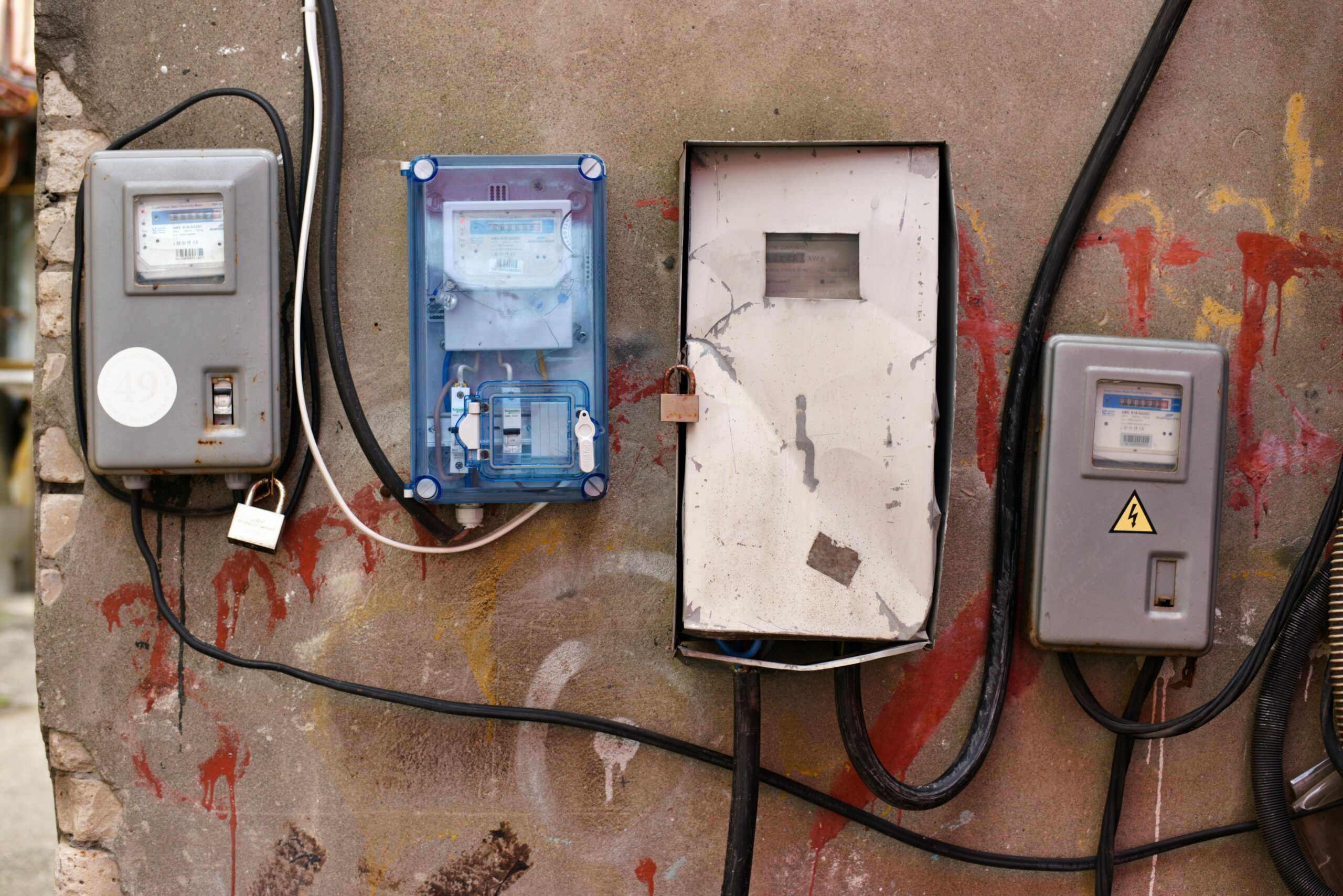Electrical outlets, also known as receptacles, serve as the bridge between our electrical devices and the home’s electrical wiring system. These outlets are designed to facilitate the flow of electricity in a safe and controlled manner, allowing us to plug in appliances, gadgets, and various electronic devices to access power from the main electrical supply.
Correct outlet functioning is crucial since they are essential for the safety, efficiency, and convenience of a household. They help prevent electrical accidents, such as shocks and fires, by safely transmitting electricity. Properly working outlets also ensure that electrical appliances and devices operate at optimal performance levels.
When outlets malfunction or wear out, they can disrupt the electrical system’s performance, potentially leading to damage to appliances, loss of power, and even hazardous situations.
Understanding Individual Outlets
How Outlets Work
Electrical outlets are pivotal in any residential or commercial setting, serving as access points for electricity to power various devices and appliances.
Essentially, outlets connected to the home tap into the home’s electrical wiring system, providing a bridge for electrical current to flow from the wiring through a device’s plug and into the device itself. This operation relies on a secure connection within the outlet and a stable electrical supply from the home’s wiring.
Factors Contributing to Outlet Malfunction
Several factors can influence the performance and safety of an individual outlet and electrical panel, leading to malfunctions that might not only affect itself but potentially cause issues with other outlets on the same circuit.
Age of Outlets
Over time, power outlets can deteriorate. This natural wear and tear can lead to loose connections, damaged contacts, or other issues that compromise the outlet’s functionality and safety. An older GFCI outlet (ground fault circuit interrupter) may not accommodate the power needs of modern devices, potentially leading to overheating or electrical shorts.
Environmental Factors
Exposure to moisture, dust, or extreme temperatures can also adversely affect GFCI outlets. Moisture can corrode the metal parts of an outlet, while dust and debris can insulate heat or cause short circuits. Extreme temperatures, both hot and cold, can warp or crack the plastic components, leading to unsafe conditions or failure.
The Domino Effect of Electrical Systems
Electrical systems in modern homes are designed with intricacy and precision, ensuring that power is evenly distributed to meet various needs.
At the heart of these systems lie circuits, each connected to multiple outlets. This interconnectedness, while efficient, introduces a potential vulnerability – the domino effect triggered by a single faulty outlet.
Overview of Home Electrical Systems
A typical home electrical system comprises a network of circuits, each protected by circuit breakers. These circuits are responsible for delivering power to outlets, appliances, and lights throughout the property.
The system is designed to ensure safety and convenience, with the circuit breaker serving as a fail-safe mechanism that shuts off electrical flow in case of an overload or short circuit.
Interconnectedness of Outlets
The power outlet within a home is often linked to others in a series within a single circuit. This design means that electricity flows from the circuit breaker through a chain of outlets.
While this setup optimizes electrical distribution and reduces wiring complexity, it also means that a problem in one outlet can affect others downstream on the same circuit.
Potential Consequences of a Faulty Outlet
When an outlet becomes faulty, perhaps due to loose connections, wear and tear, or moisture intrusion, it doesn’t just pose a risk at the problem site. At the same time, faulty outlets can disrupt the entire flow to the outlets downstream, so different ones might not work properly. As a whole, this problem can lead to a series of adverse effects, for example, a tripped circuit breaker.
These may also include intermittent power loss, the potential for electrical fires, and even damage to connected appliances or devices. Given the potential for significant damage and danger, promptly addressing any outlet issues is critical to maintain the safety and functionality of a home’s electrical system.
Identifying a Bad Outlet
Identifying a faulty electrical outlet is critical for maintaining the safety and functionality of a home’s electrical system. Here are key signs that an outlet may be malfunctioning:
Signs of a Malfunctioning Outlet
Sparking
If you notice sparks when plugging or unplugging devices, this could indicate a serious issue that poses a fire risk.
Burn Marks
Discoloration or burn marks around an outlet are tell-tale signs of overheating components.
Importance of Timely Identification
Timely identification of a bad outlet is paramount. It not only prevents potential hazard scenarios, such as electrical fires, but also ensures that other connected devices and outlets do not suffer from subsequent failures.
Early detection followed by immediate action can dramatically reduce risks and safeguard the household.
Immediate Impacts on Neighboring Outlets
When one outlet experiences issues, it can inadvertently affect others connected to the same electrical circuit. Primary concerns include:
Electrical Overload Risks
A malfunctioning outlet can cause an unexpected increase in electrical load. Outlets are designed to handle a specific amount of current; when this limit is exceeded, it creates an overload.
This surge can travel through the circuit, affecting other outlets and potentially causing their protective features to trip (such as breakers flipping off) or, worse, fail entirely if the system is outdated or compromised.
Fire Hazards
One of the most severe consequences of a bad outlet is the increased risk of fire. Overheating, sparked by overloads or short circuits within a faulty outlet, can ignite surrounding materials.
This hazard is not isolated; the heat can quickly spread through the walls, affecting neighboring outlets and creating a potential fire risk to the entire structure.
Voltage Fluctuations
A compromised outlet may cause inconsistent voltage levels, leading to fluctuations that can affect connected devices or appliances.
These fluctuations can range from minor annoyances, like flickering lights, to severe damage to sensitive electronics plugged into adjacent outlets. Over time, this can lead to reduced lifespan of expensive appliances and electronics, and pose a risk of electrical shocks.
Assessing the Impact on Connected Devices
When a single electrical outlet malfunctions, it’s not just an isolated issue. The ripple effect it can create within an electrical system can have serious repercussions on connected devices. Understanding these risks is crucial for safeguarding both our valuable electronics and our home environment.
Damage to Electronics
Faulty outlets can cause power surges that are detrimental to sensitive electronic devices. These surges can overload the internal components of computers, televisions, and other high-value items, potentially leading to irreparable damage.
The cost of replacing such devices can be substantial, not to mention the loss of important data and personal memories that may not be recoverable.
Safety Concerns for Appliances
Beyond the financial impact, safety concerns arise when an outlet goes bad. Appliances connected to a faulty outlet are at an increased risk of electrical fires.
Overheating, sparked by erratic power supply, can ignite fires that not only threaten the appliance itself but can also spread, posing a severe danger to the household.
Additionally, there is a heightened risk of electric shock when using appliances connected to compromised outlets, which could result in serious injuries.
Long-term Consequences
The long-term consequences of ignoring a problematic outlet extend beyond immediate damage or safety hazards. Over time, the ongoing issues can degrade the overall electrical system of a home, leading to more extensive and costly repairs.
Furthermore, the continuous strain on appliances and electronics accelerates wear and tear, shortening their lifespan and necessitating premature replacements. Ensuring that electrical outlets are in proper working order is a critical aspect of maintaining the integrity and safety of a home’s electrical system, protecting both property and residents.
Investigating Common Causes
The functionality and safety of electrical outlets in a house can be compromised by several factors. Understanding these can help prevent potential hazards and ensure a stable electrical system throughout your home.
For example, while taking on home improvement projects can be satisfying, electrical work requires a level of expertise that goes beyond the average DIY project. Inexperienced handling of electrical installations can lead to improper wiring, overloaded circuits, and ultimately create a risk for electrical fires.
It’s crucial to have a respect for the complexity of electrical systems and to consider professional advice or intervention when dealing with any electrical upgrades or repairs.
The quality of outlet installation plays a critical role in ensuring the safety and efficiency of your home’s electrical system. Poorly installed outlets may not only result in malfunctioning appliances but also pose serious safety hazards.
Issues like loose connections, incorrect wiring, or using substandard materials can lead to overheating, sparking, and in severe cases, fire outbreaks. Ensuring that a certified electrician carries out outlet installations or checks can mitigate these risks significantly.
Problems with the house’s wiring system, whether due to age, rodents, or poor quality materials, can affect the performance of electrical outlets. Over time, wires may become frayed or corroded, leading to intermittent power supply or even shorts.
Furthermore, in older homes, the existing wiring may not be equipped to handle the electrical load of modern appliances, leading to overloaded circuits. Regular inspections by a qualified electrician can help identify and rectify these issues before they lead to more significant problems.
Preventive Measures for Outlet Health
Ensuring the health and safety of electrical outlets within a home or building can significantly mitigate the risks associated with electrical faults. Following are some crucial preventive measures:
Regular Electrical Inspections
Conducting regular electrical inspections by certified electricians can help identify and rectify potential hazards before they escalate. These inspections are designed to examine the integrity of outlets, wiring, and associated electrical components to ensure they are in good working condition and comply with safety standards.
Upgrading Outdated Wiring
Old, outdated wiring is not only inefficient but also poses a significant fire risk. It may not be designed to handle the electrical load of modern appliances, leading to overheating and potentially causing electrical fires. Upgrading to modern, high-capacity wiring systems can enhance electrical safety and performance.
Professional Installation Practices
Electrical installations and repairs should always be carried out by professionals. Proper installation according to building codes and standards helps prevent issues such as short circuits, grounding problems, and other electrical mishaps.
Professional electricians ensure that all electrical components, including outlets, are correctly installed and safely integrated into the building’s electrical system.
Addressing Common Misconceptions
Myths about Outlet Isolation
One pervasive myth surrounding electrical outlets is the notion of outlet isolation—that is, the idea that a single outlet operates independently of and without any impact on other outlets within the same electrical system. This misconception stems from a basic misunderstanding of how household electrical wiring is designed.
In reality, multiple outlets are often connected to the same circuit. Consequently, a malfunction or excessive load on one outlet has the potential to influence the performance and safety of others connected to the same circuit.
Clarifying the Chain Reaction Effect
The “Chain Reaction Effect” in electrical systems refers to the potential cascade of issues that can occur when one element in the system fails or malfunctions. For example, if one outlet is overloaded and causes a short circuit, this can trigger the circuit breaker to shut off power to all outlets on that circuit.
Similarly, a faulty outlet can introduce resistance in the circuit, potentially leading to overheating and damage to other outlets or even electrical fires. Understanding this interconnectedness is crucial for maintaining a safe and functional electrical system in homes and buildings.
The Role of Circuit Breakers in Mitigating Impact
Circuit breakers play a critical role in the safety and functionality of our electrical systems, acting as guardians that monitor and control the flow of electricity.
How Circuit Breakers Function
Circuit breakers are designed to automatically interrupt electrical flow whenever the system is overloaded or at risk of damage due to surges, effectively preventing potential hazards such as fires or equipment damage.
They detect the fault condition and immediately halt the electrical flow, thereby protecting the circuit from damage. Once tripped, a circuit breaker can be reset to resume normal operation, making it a reusable and essential safety tool in any electrical system.
Limitations and Risks
Despite their critical safety functions, circuit breakers do have limitations and associated risks. One primary limitation is their dependency on proper installation and maintenance. If a circuit breaker is not correctly installed or if it fails to operate as designed, it might not provide the intended protection against electrical overloads or short circuits.
Additionally, circuit breakers cannot prevent all electrical hazards. For example, they do not offer protection against arc faults, which can occur when there’s an unintended arc created by electricity traveling through an unintended path. Furthermore, overreliance on circuit breakers without understanding their functional limitations may lead to misuse or neglect of other necessary safety measures.
Long-term Solutions for Outlet Harmony
Achieving harmony among electrical outlets in a home or workplace, thereby minimizing the ripple effects of one malfunctioning outlet on others, involves implementing long-term, proactive strategies. Two of the most effective approaches are the integration of smart home technologies and the upgrade to modern outlets.
Smart Home Technologies
Smart home technologies offer a tailored solution through monitoring and management features. By connecting electrical outlets to a centralized system, individuals can closely monitor the health and performance of each outlet.
This technology allows for real-time alerts in case of overloads or faults, enabling immediate response to prevent cascade effects. Additionally, smart outlets can be remotely controlled, providing the flexibility to deactivate problematic outlets or manage power distribution efficiently, thus reducing stress on the electrical system.
Upgrading to Modern Outlets
Upgrading traditional outlets to modern variants is another effective long-term solution. Modern outlets come equipped with built-in safety features such as Ground Fault Circuit Interrupters (GFCIs) and Arc Fault Circuit Interrupters (AFCIs). GFCIs protect against electric shock by shutting off the power if an imbalance occurs, while AFCIs protect against fires by detecting and interrupting arc faults.
Upgrading to these modern outlets enhances overall electrical safety and reduces the likelihood of one outlet’s issues affecting others. Additionally, modern outlets are designed to handle higher loads and more sophisticated electronic devices, providing a robust solution for contemporary power needs.
Summary
In our exploration of how one faulty outlet can impact others in the same electrical system, we uncovered several key insights. Firstly, electrical circuits are interconnected networks where an issue in one component can indeed affect others.
A bad outlet can lead to a variety of electrical problems, including reduced efficiency, potential fire hazards, and the premature failure of other outlets and connected devices. It became evident that understanding the interconnected nature of our electrical systems is crucial for proper maintenance and safety.
Given the potential risks associated with a faulty outlet, the importance of regular outlet maintenance cannot be overstated. Proper maintenance includes routine inspections, immediate repairs of any identified issues, and replacements of outdated or damaged outlets.
This not only ensures a safer electrical system within a home or building but also prolongs the lifespan of the electrical infrastructure and connected appliances. Proactive outlet maintenance is an investment in both safety and efficiency, safeguarding against the ripple effects of electrical problems.
We help companies refine their messaging, hone in their sales process, and grow their pipeline – all with a new website.




